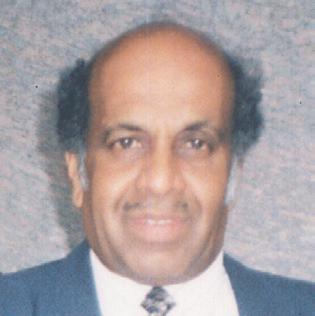
3 minute read
Towards healthier eating habits
from 2010-07 Sydney (2)
by Indian Link
Cultural diversity, food and ageing
BY NOEL G DE SOUZA
Multiculturalism has moved into a new phase. Now being referred to as “CALD”, or “culturally and linguistically diverse communities”, the focus has shifted from cultural preservation to solving specific problems that ethnic groups face such as issues associated with health and ageing. I attended two such CALD-related meetings recently.
When migrants arrive in Australia, they find that food ingredients are both plentiful and reasonably priced. Sugar, butter/ghee and flour, for example, are cheap. One is thus able to cook one’s cultural food using lavish quantities of such ingredients. However, their overuse can result in unhealthy consequences.

The foremost consequence of high calorie intake is obesity (affecting around 1.6 million adults in NSW), which cuts across cultural boundaries. Diabetes is another emerging problem. Migrants from Italy, South Asia and Asia are found to develop diabetes at a much greater rate (often almost double) than in their countries of origin. The resultant health issues are now being officially addressed. Overall, three million Australians either have or are at risk of diabetes.
The current “Get Healthy Campaign” of the NSW Multicultural Health Communication Service is promoting the preparation of ethnic dishes in more healthy versions. A function was recently held at the Blue Elephant Sri Lankan restaurant in Pennant Hills to launch the Get Healthy book, which contains such healthy recipes.
guides people towards healthier eating habits was also outlined at the function. The Get Healthy book is available gratis at the department of NSW Health.
Many migrants from Asia, including Indians, came to Australia in the 1970s and 1980s. There is now an ageing population amongst them.

In May, The Diversity & Ageing In Action Forum 2010 was held at the Parramatta Town Hall. The forum’s theme was the needs of the aged in diverse ethnic groups. Planning for such needs requires the diversity aspect to be recognised.
Launching the proceedings, Paul Lynch, NSW Minister for Ageing, elaborated on the links between ageing and ethnicity. Pino Migliorino of the Federation of Ethnic Communities’ Councils of Australia (FECCA), and also Chair of the NSW Ministerial Advisory Committee on Ageing (MACA), presided over the forum.
Some statistics are revealing. In New South Wales over a million people speak a language other than English. Most of them live in Sydney, making them roughly one in four of the population; 23% of these are estimated to be over 65 years old. Ms Sigrid Patterson, Director of the NSW Office for Ageing, outlined the implications for the State of NSW. It was pointed out that the Chinese have over 75,000 people over the age of 65. We need to know how many Indians fall into this category.
Diabetes is becoming the problem of middle aged migrants, whilst dementia that of the elderly
This book is available free from NSW Health. In a wire-bound sturdy card format, it can easily find a place on a kitchen shelf. The selected recipes are the winning entries in the Healthy and Tasty Recipe Competition (2009). Dishes were prepared before some 200 people and tasted by judges. Participants came from the Chinese, Filipino, Italian, Samoan and Sri Lankan (Sinhalese and Tamil) communities.
Dr Renee Lim gave the keynote address at the book launch, and Guest Speaker Shamala Ratnesar, developer of the Total Life Diet, outlined the strong links between diabetes and food. Hornsby Mayor Nick Berman, whose father migrated from Sri Lanka, presented the opening speech and pointed out that Hornsby shire just a decade ago had some 25% of an ethnic population and that this has since risen to 35%. Ethnic health is, therefore, an important issue.
A NSW Health advisory service which
Ms Roserina Murace, the Manager of Community and Carer Support at the Department of Health and Ageing (at the Federal level), elaborated on the services available and the expansions to these which will have to be effected on the basis of the latest statistical data. Aged care is increasingly becoming a Federal matter, especially with regard to funding. Ultimately, though, aged care has to be provided at the local level, and in this regard the municipal level gains importance.
Prof Brian Draper, of the University of New South Wales, talked about the direction and findings of research on specific issues like dementia and diabetes. The lecture was a sobering assessment about what the ageing process entails. Diabetes is becoming the problem of middle aged migrants, whilst dementia that of the elderly. Alzheimer’s affects around 245,000 persons in Australia. It was very reassuring to realise that there is a strong commitment at various levels of government with regard to providing services for the welfare of the aged in ethnic communities. To ensure that these services best address the emerging needs, on-going input is needed from the ethnic communities themselves. The Indian community needs to actively involve itself in both the study and the provision of health and aged services.








